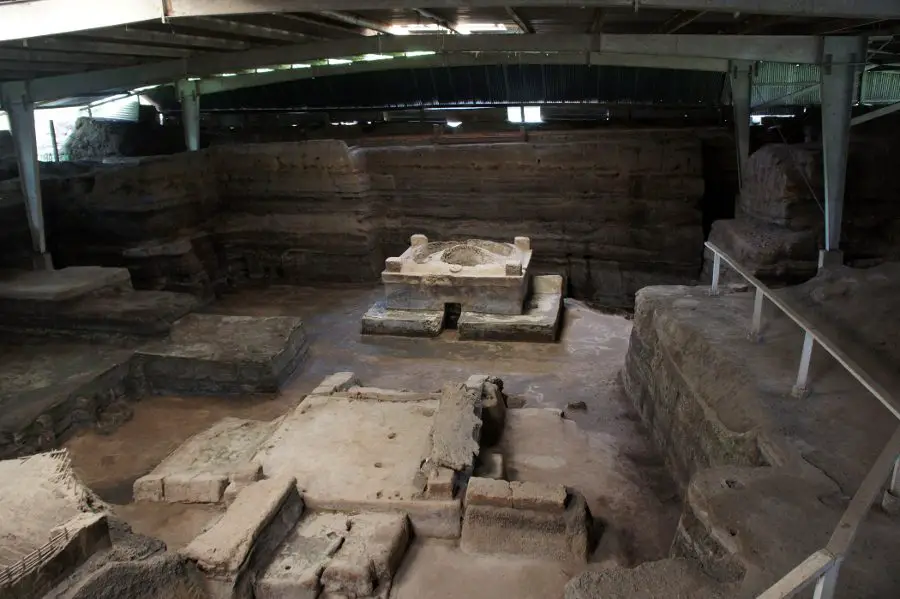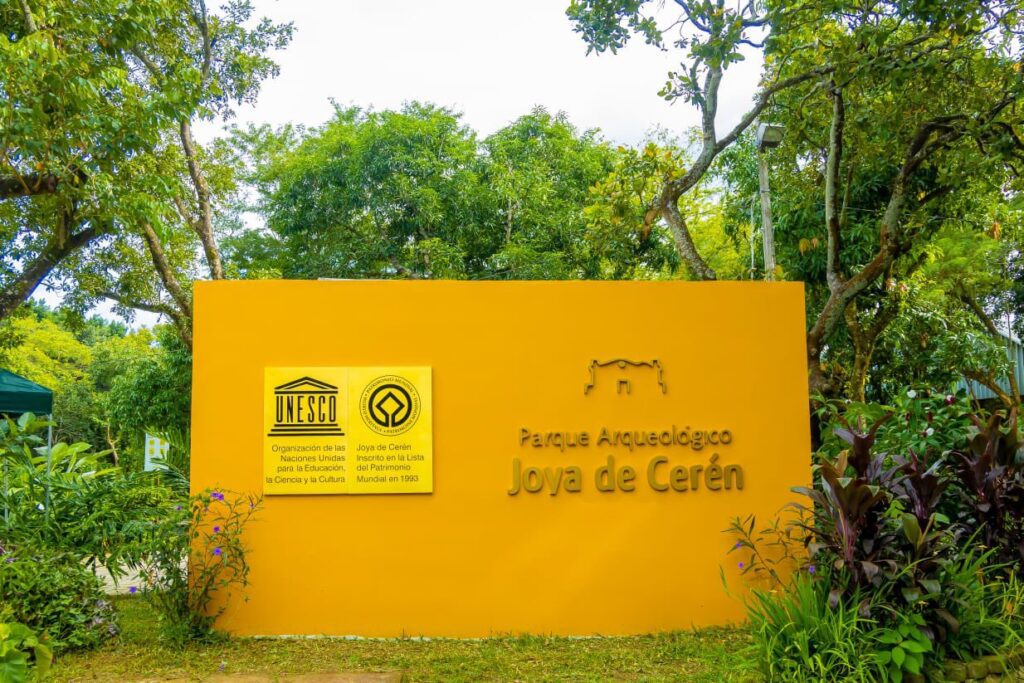The Joya de Cerén Archaeological Park in El Salvador, often dubbed the Pompeii of the Americas, was a pre-Columbian Maya farming community located in the Zapotitan Valley in the department of La Libertad.
Located just 38 kilometers from downtown San Salvador, the Joya de Cerén Archaeological Park is a UNESCO World Heritage Site that offers a rare glimpse into the daily lives of ordinary Maya people.
This ancient Maya farming village was buried under volcanic ash and is one of Mesoamerica’s best-preserved pre-Hispanic sites—it was preserved almost perfectly under layers of volcanic ash for over 1,400 years.
A Village Frozen in Time
Unlike many ancient Maya sites, which focus on towering temples or royal tombs, Joya de Cerén captures something far more intimate—everyday life.
The site dates back to around 600 AD, when a nearby volcano erupted, blanketing the farming village in ash and preserving homes, tools, food, and even footprints.
The site was discovered in 1976 during the construction of grain-storage silos; the site quickly gained international recognition for its exceptional preservation and historical value.
What makes Joya de Cerén so unique is its human element. Archaeologists have unearthed adobe homes, kitchens, storage pits, and even a Maya sauna (Temazcal).
These discoveries tell stories of agriculture, community, and spirituality — stories often left untold in the grand narratives of ancient empires.
Researchers have found beans in pots, manioc fields still in furrows, and tools left mid-use, painting a vivid picture of life before the eruption.
SEE ALSO: Best Mayan Ruins in El Salvador: Exploring Archaeological Sites in El Salvador

Underneath the layers of volcanic ash, the best-preserved example of a pre-hispanic village in Mesoamerica can be found, with architectural remains, grouped into compounds that include civic, religious and household buildings.” UNESCO.
What You’ll See at the Park
The park is beautifully laid out to guide visitors through the excavated village. Elevated walkways wind above the structures, allowing a close-up look without disturbing the ruins. Highlights include:
- Multi-room homes built of adobe and thatch
- A well-preserved Temazcal, used for ritual and relaxation
- Reconstructed food storage areas and communal spaces
- A small but informative museum showcasing artifacts, interactive displays, and explanations in both Spanish and English
The Structures and Artefacts
The archaeological site features 18 structures, 10 of which have been fully or partially excavated.
According to UNESCO, these include a large public building adjacent to a central plaza, two residential dwellings, and three storehouses—one undergoing renovations, a kitchen, and a sweat bath.
On the northeast side of the plaza, archaeologists also uncovered a religious structure used for communal ceremonies and another space believed to have been used by a shaman.
Historians note that the rapid deposition of volcanic ash from the Loma Caldera eruption created rare preservation conditions, allowing organic materials and everyday artifacts to survive intact.
These items are now exhibited on-site at the Joya de Cerén Museum.
SEE ALSO: Exploring El Salvador Culture: Embracing Vibrant Customs and Traditions with Warm-hearted People
Planning Your Visit
Visiting Joya de Cerén is easy and enriching. Guided tours are available for a deeper understanding of the site, or you can explore at your own pace.
Joya de Cerén is a short drive from San Salvador in the La Libertad department. You can reach it by rental car, taxi, or bus.
The best way to explore this site is as a combo package that can take you to other Mayan sites in the area. You can also combine a trip to the site with a visit to the Coatepeque Lake Caldera or the city of Santa Ana.

Improving the Joya de Cerén Archaeological Park
In December 2021, the Salvadoran government, in partnership with the Franco-Salvadoran Program, officially reopened the Joya de Cerén Archaeological Park following extensive renovations.
The site was closed most of the year while undergoing a $1.3 million restoration to improve the visitor experience.
Key upgrades included modernizing the on-site museum, which features new lighting, updated furnishings, and interpretive materials in Spanish, French, and English.
The park also introduced a Braille information system to improve accessibility for visitors with visual impairments.

Joya de Cerén Archaeological Park: A Must-See Cultural Treasure
Joya de Cerén isn’t just an archaeological site—it’s a time capsule that brings ancient lives into clear, relatable focus.
Visit the Joya the Ceren Archaeological site. It is located near other top tourist attractions such as the San Andres Mayan Ruins, the city of Santa Ana, and the Coatepeque Caldera.
If you’re into history, love discovering new places, or want a break from the beach scene, checking out Joya de Cerén will give you a whole new appreciation for El Salvador’s culture and past.
“Joya de Ceren archaeological site also constitutes a cultural symbol in El Salvador, where the past is linked to the present and plays an important role in human development of the region.” UNESCO.

 Joya de Ceren Archaeological Park.
Joya de Ceren Archaeological Park.


